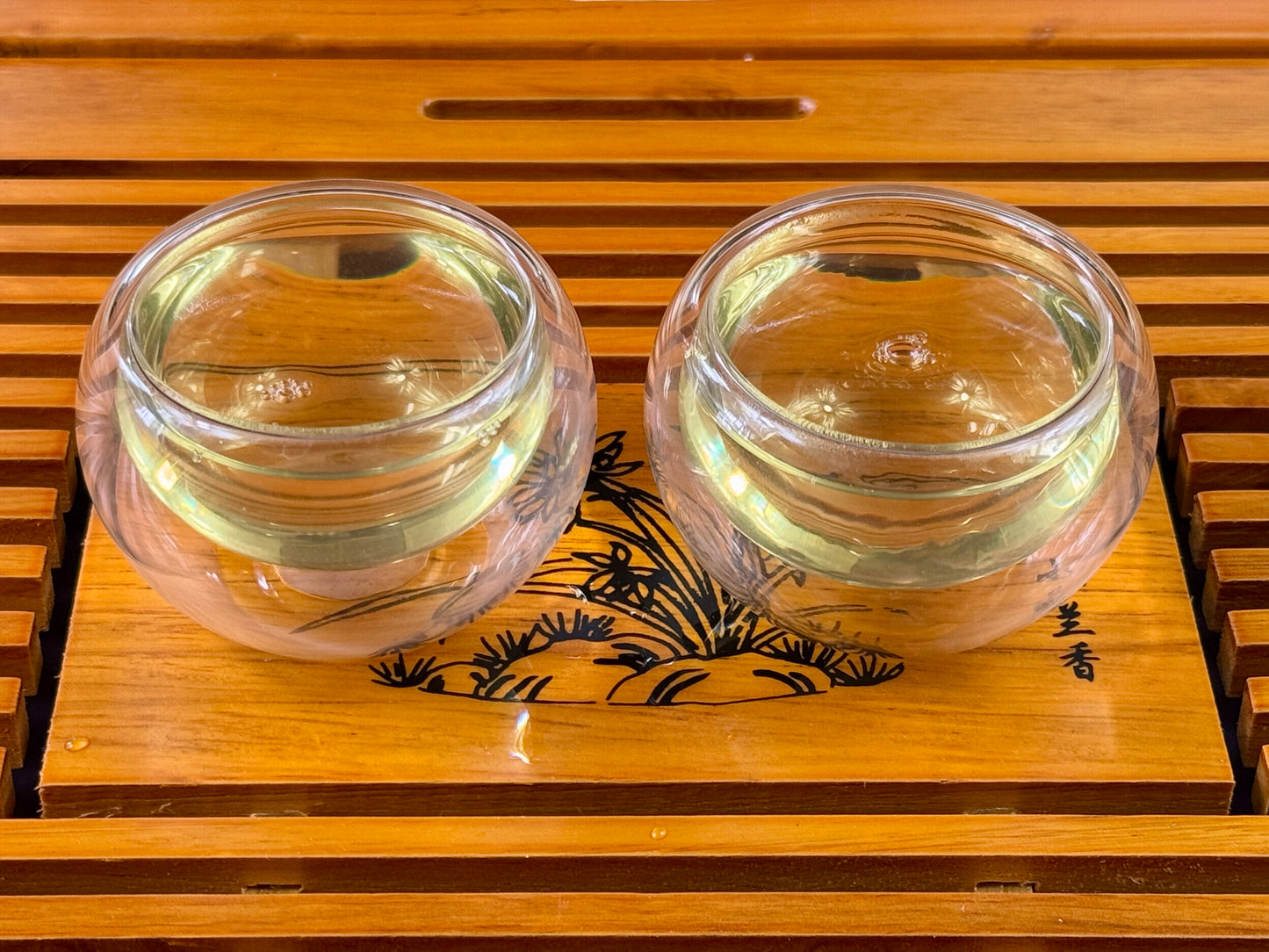Tieguanyin Premium Oolong Tea
Tieguanyin Premium Oolong Tea
Couldn't load pickup availability
Tieguanyin – Iron Goddess of Mercy Oolong (铁观音)
Classic Anxi Oolong Tea with Floral Depth and Roasted Warmth
A tea of elegance and strength, named after the Goddess of Compassion.
Tieguanyin (铁观音), or “Iron Goddess of Mercy,” is one of China’s most famous oolong teas, originating from Anxi County in Fujian Province. Renowned for its floral fragrance, smooth body, and lingering sweetness, Tieguanyin is a symbol of harmony, balance, and compassion in every cup.
Depending on processing, Tieguanyin can be crafted as a light floral tea or a deeply roasted traditional oolong. This version offers the traditional medium-roast style, prized for its warmth, orchid fragrance, and resonant aftertaste.
If you'd like to know what drinking this tea is like, you can read this: Tieguanyin - The Aroma of a Blossoming Garden.
Why You’ll Love Tieguanyin
- One of the Ten Famous Teas of China
- Traditional roast with floral, nutty, and sweet depth
- Smooth, warming body with gentle complexity
- Perfect for daily Gongfu brewing and quiet moments
- Rooted in centuries of cultural reverence and tea mastery
Tasting Notes
• Fragrance of orchid, roasted grain, and stone fruit
• Smooth body with notes of toasted hazelnut and dried apricot
• Subtle sweetness and minerality
• Lingering finish with soft floral uplift
Tea Profile
• Type: Traditional Anxi Oolong Tea
• Cultivar: Tieguanyin (铁观音)
• Origin: Anxi County, Fujian Province, China
• Elevation: 600–900 meters
• Harvest: Spring or autumn (specify if known)
• Craftsmanship: Medium oxidation (~30–40%), charcoal-roasted
• Appearance: Tightly rolled dark green leaves; golden-amber liquor
• Collected: 2025
Processing
This Tieguanyin follows the traditional roasted method, offering rich aroma and aging potential:
- Plucking – One bud with 2–3 mature leaves
- Withering & Cooling – Sun and indoor air withering
- Tossing & Oxidation – Light bruising initiates oxidation
- Fixation & Rolling – Pan-fired to halt oxidation, then tightly rolled
- Charcoal Roasting – Roasted slowly in stages to develop warmth and fragrance
This process highlights the tea’s orchid fragrance, balanced sweetness, and layered depth.
More about Tieguanyin and its production.
Health Benefits
Tieguanyin is warming, energizing, and nourishing:
• Supports digestion and internal balance
• Promotes mental focus and calm energy
• Rich in polyphenols, antioxidants, and aromatic compounds
• Encourages a sense of centeredness and grounded vitality
Brewing Instructions
Gongfu Method (5 oz / 150 ml)
- Tea amount: 5–6 grams
- Water temperature: 95°C / 203°F
- Rinse: 5 seconds
- Infusions:
- 1st: 25–30 sec
- 2nd: 35–40 sec
- 3rd–6th: Increase time gradually
- Tip: Use a clay teapot or Gaiwan to capture floral depth and roasted richness
Cup Method (8.8 oz / 250 ml)
- Tea amount: Adjust based on personal preference for tea strength.
- Water temperature: 90–95°C / 194–203°F
- Steep time: 2–3 minutes
- Re-steep: 2–3 times
- Note: Especially comforting in cooler weather or after meals
Cultural Significance
Named after Guanyin, the Bodhisattva of Compassion, Tieguanyin is both a spiritual symbol and a cultural treasure. According to legend, the tea plant was gifted to a poor farmer in a dream by the Goddess herself, as a reward for his sincere devotion.
Tieguanyin represents devotion, grace, and generosity—its deep fragrance and sweet finish are reminders of the harmony between effort and stillness.
Among Chinese oolongs, Tieguanyin is a tea of reverence, often served in temples and traditional ceremonies to honor guests, ancestors, and moments of peace.
Share













A beautiful, floral, refreshing Tieguanyin. It’s wonderful to have a local source for high quality tea like this without waiting weeks for international shipping :)
This is one of the best best Tieguanyin tea I tried. The aroma is very nice, and the tea itself is very smooth to drink with good flavour ligered in your mouth after. A very refreshing tea. I considered this is one of my best purchase todate.
best tea out there price and quality is outstanding













